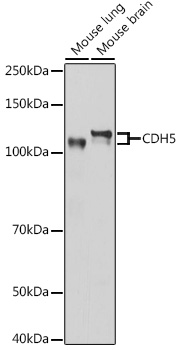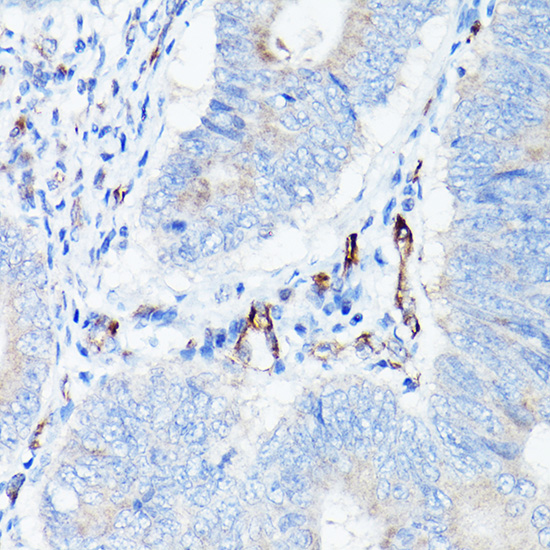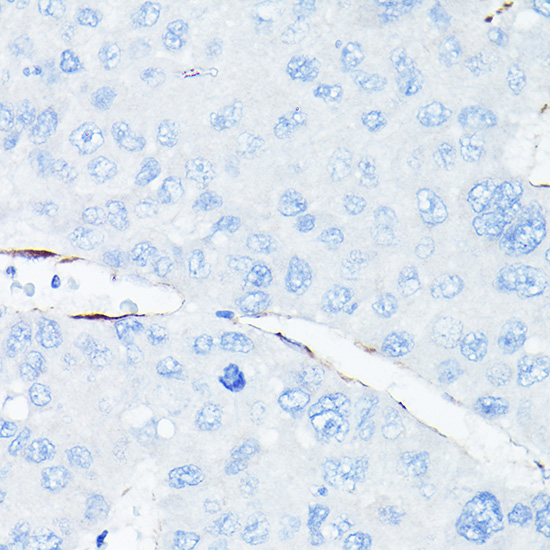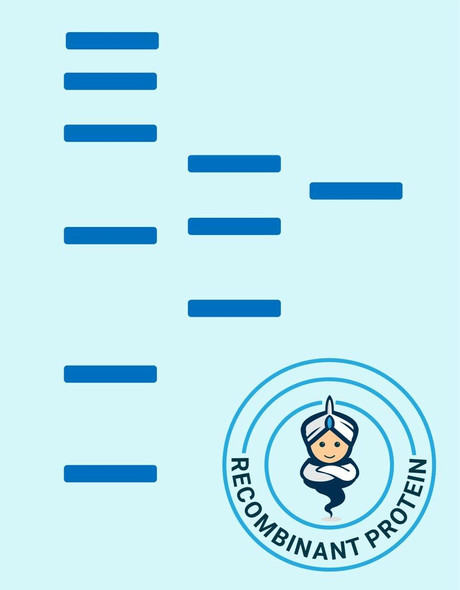Cell Biology Antibodies 3
Anti-CDH5 Antibody (CAB12416)
- SKU:
- CAB12416
- Product Type:
- Antibody
- Reactivity:
- Human
- Reactivity:
- Mouse
- Host Species:
- Rabbit
- Isotype:
- IgG
- Antibody Type:
- Polyclonal Antibody
- Research Area:
- Cell Biology
Description
| Antibody Name: | Anti-CDH5 Antibody |
| Antibody SKU: | CAB12416 |
| Antibody Size: | 20uL, 50uL, 100uL |
| Application: | WB IHC |
| Reactivity: | Human, Mouse |
| Host Species: | Rabbit |
| Immunogen: | A synthetic peptide corresponding to a sequence within amino acids 650-750 of human CDH5 (NP_001786.2). |
| Application: | WB IHC |
| Recommended Dilution: | WB 1:500 - 1:2000 IHC 1:50 - 1:200 |
| Reactivity: | Human, Mouse |
| Positive Samples: | HUVEC, Mouse lung, Mouse brain |
| Immunogen: | A synthetic peptide corresponding to a sequence within amino acids 650-750 of human CDH5 (NP_001786.2). |
| Purification Method: | Affinity purification |
| Storage Buffer: | Store at -20'C. Avoid freeze / thaw cycles. Buffer: PBS with 0.02% sodium azide, 50% glycerol, pH7.3. |
| Isotype: | IgG |
| Sequence: | GGEM DTTS YDVS VLNS VRRG GAKP PRPA LDAR PSLY AQVQ KPPR HAPG AHGG PGEM AAMI EVKK DEAD HDGD GPPY DTLH IYGY EGSE SIAE SLSS LGTD S |
| Gene ID: | 1003 |
| Uniprot: | P33151 |
| Cellular Location: | Cell junction, Cell membrane, Single-pass type I membrane protein |
| Calculated MW: | 74kDa/87kDa |
| Observed MW: | 120-140KDa |
| Synonyms: | CDH5, 7B4, CD144, cadherin-5 |
| Background: | This gene encodes a classical cadherin of the cadherin superfamily. The encoded preproprotein is proteolytically processed to generate the mature glycoprotein. This calcium-dependent cell-cell adhesion molecule is comprised of five extracellular cadherin repeats, a transmembrane region and a highly conserved cytoplasmic tail. Functioning as a classical cadherin by imparting to cells the ability to adhere in a homophilic manner, this protein plays a role in endothelial adherens junction assembly and maintenance. This gene is located in a gene cluster in a region on the long arm of chromosome 16 that is involved in loss of heterozygosity events in breast and prostate cancer. |
| UniProt Protein Function: | CDH5: Cadherins are calcium dependent cell adhesion proteins. They preferentially interact with themselves in a homophilic manner in connecting cells; cadherins may thus contribute to the sorting of heterogeneous cell types. This cadherin may play a important role in endothelial cell biology through control of the cohesion and organization of the intercellular junctions. It associates with alpha-catenin forming a link to the cytoskeleton. Acts in concert with KRIT1 to establish and maintain correct endothelial cell polarity and vascular lumen. These effects are mediated by recruitment and activation of the Par polarity complex and RAP1B. Required for activation of PRKCZ and for the localization of phosphorylated PRKCZ, PARD3, TIAM1 and RAP1B to the cell junction. Interacts via cadherin 5 domain with PTPRB. Interacts with TRPC4. Interacts with KRIT1. Endothelial tissues and brain. |
| UniProt Protein Details: | Protein type:Motility/polarity/chemotaxis; Cell adhesion; Membrane protein, integral Chromosomal Location of Human Ortholog: 16q22.1 Cellular Component: adherens junction; tight junction; membrane; integral to membrane; plasma membrane; intercellular junction; cell junction Molecular Function:protein binding; beta-catenin binding; calcium ion binding; protein phosphatase binding; receptor binding Biological Process: intercellular junction assembly and maintenance; negative regulation of cell proliferation; vascular endothelial growth factor receptor signaling pathway; homophilic cell adhesion; blood vessel maturation |
| NCBI Summary: | This gene is a classical cadherin from the cadherin superfamily and is located in a six-cadherin cluster in a region on the long arm of chromosome 16 that is involved in loss of heterozygosity events in breast and prostate cancer. The encoded protein is a calcium-dependent cell-cell adhesion glycoprotein comprised of five extracellular cadherin repeats, a transmembrane region and a highly conserved cytoplasmic tail. Functioning as a classic cadherin by imparting to cells the ability to adhere in a homophilic manner, the protein may play an important role in endothelial cell biology through control of the cohesion and organization of the intercellular junctions. An alternative splice variant has been described but its full length sequence has not been determined. [provided by RefSeq, Jul 2008] |
| UniProt Code: | P33151 |
| NCBI GenInfo Identifier: | 322510142 |
| NCBI Gene ID: | 1003 |
| NCBI Accession: | P33151.5 |
| UniProt Secondary Accession: | P33151,Q4VAI5, Q4VAI6, |
| UniProt Related Accession: | P33151 |
| Molecular Weight: | |
| NCBI Full Name: | Cadherin-5 |
| NCBI Synonym Full Names: | cadherin 5, type 2 (vascular endothelium) |
| NCBI Official Symbol: | CDH5 |
| NCBI Official Synonym Symbols: | 7B4; CD144 |
| NCBI Protein Information: | cadherin-5; 7B4 antigen; VE-cadherin; cd144 antigen; endothelial-specific cadherin; vascular endothelial cadherin; cadherin 5, type 2, VE-cadherin (vascular epithelium) |
| UniProt Protein Name: | Cadherin-5 |
| UniProt Synonym Protein Names: | 7B4 antigen; Vascular endothelial cadherin; VE-cadherin; CD_antigen: CD144 |
| Protein Family: | Cadherin |
| UniProt Gene Name: | CDH5 |
| UniProt Entry Name: | CADH5_HUMAN |
View AllClose










